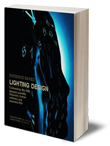the New Frontier in Human Health, Cognition Productivity, Learning and SLEEP

Beauty, grace, and vitality are just a few aesthetic reasons to incorporate natural light into every project but the full potential of environmental light is just now surfacing as to the physiological and neurological affects that both natural and artificial light have on the human body and brain. In recent years, scientific and medical research has uncovered the interconnection between design related environmental factors and various bodily functions, human behaviors and disease conditions yet the information has been slow in coming to the professionals responsible for the built environments in which modern man spends over 90% of his day. Specifically formatted for the A&D professional, Deborah will present cutting-edge, evidence based research investigating how and WHY both natural and artificial environmental light are now proving to be a major player in achieving a healthy body and brain. With simple, easy to understand anatomical and neurological references, participants in this fast paced, interactive session, will:
Discover how seemingly unrelated aspects of our lives such as; performance, productivity, learning, concentration, cognition, weight gain/loss, overall health, daytime fatigue, quality sleep and even sexual performance have all been linked with environmental light …who knew that building design would play a role in that!
Learn HOW the newly discovered iPRGC cells function to transport environmental light thru to the portion of the brain that is responsible for key neurological functions and WHY architectural and design specifications can either inhibit or support this process.
Discover how daytime evidence-based design specifications play a critical role in achieving nighttime sleep quality as well as reducing daytime fatigue levels simply by designing spaces that work to support how the body and brain function
Based on recent scientific and medical research, develop a professional skill set understanding of the human circadian system in order to create built environments responsible for improving workplace productivity and performance, impacting healthcare outcomes, driving retail sales, and creating a positive effect on overall health and wellness
| 



